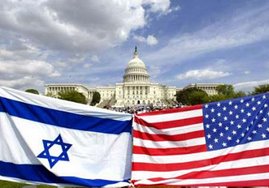1517 AD : The Ottoman Turks of Asia Minor defeated the Mamelukes, with few interruptions, ruled Palestine until the winter of 1917-18. The administration of the districts was placed largely in the hands of Arab Palestinians, who were descendants of the Canaanites. The Christian and Jewish communities, however, were allowed a large measure of autonomy.
1845 Jewish in Palestine were 12,000 increased to 85,000 by 1914. All people in Palestine were Arabic Muslims and Christians.
1897 the first Zionist Congress held Basle, Switzerland, issued the Basle programme on the colonization of Palestine.
1904 the Fourth Zionist Congress decided to establish a national home for Jews in Argentina.
1906 the Zionist congress decided the Jewish homeland should be Palestine.
1914 With the outbreak of World War I, Britain promised the independence of Arab lands under Ottoman rule, including Palestine, in return for Arab support against Turkey which had entered the war on the side of Germany.
1916 Britain and France signed the Sykes-Picot Agreement, which divided the Arab region into zones of influence. Lebanon and Syria were assigned to France, Jordan and Iraq to Britain and Palestine was to be internationalized.
1917 The British government issued the Balfour Declaration on November 2, in the form of a letter to a British Zionist leader from the foreign secretary Arthur J. Balfour prmissing him the establishment of a national home for the Jewish people in Palestine.
1917-1918 Aided by the Arabs, the British captured Palestine from the Ottoman Turks. The Arabs revolted against the Turks because the British had promised them, in correspondence with Shareef Husein ibn Ali of Mecca, the independence of their countries after the war. Britain, however, also made other, conflicting commitments in the secret Sykes-Picot agreement with France and Russia (1916), it promised to divide and rule the region with its allies. In a third agreement, the Balfour Declaration of 1917, Britain promised the Jews a Jewish "national home" in Palestine .
1918 After WW I ended, Jews began to migrate to Palestine, which was set a side as a British mandate with the approval of the League of Nations in 1922. Large-scale Jewish settlement and extensive Zionist agricultural and industrial enterprises in Palestine began during the British mandatory period, which lasted until 1948.
1919 The Palestinians convened their first National Conference and expressed their opposition to the Balfour Declaration. 1920 The San Remo Conference granted Britain a mandate over Palestine. and two years later Palestine was effectively under British administration. Sir Herbert Samuel, a declared Zionist, was sent as Britain's first High Commissioner to Palestine. 1922 The Council of the League of Nations issued a Mandate for Palestine.
1929 Large-scale attacks on Jews by Arabs rocked Jerusalem. Palestinians killed 133 Jews and suffered 116 deaths. Sparked by a dispute over use of the Western Wall of Al-Aqsa Mosque ( this site is sacred to Muslims, but Jews claimed it is the remaining of jews temple all studies shows clearly that the wall is from the Islamic ages and it is part of al-Aqsa Mosque). But the roots of the conflict lay deeper in Arab fears of the Zionist movement which aimed to make at least part of British-administered Palestine a Jewish state.
1936 The Palestinians held a six-month General Strike to protest against the confiscation of land and Jewish immigration.
1937 Peel Commission, headed by Lord Robert Peel, issued a report. Basically, the commission concluded, the mandate in Palestine was unworkable There was no hope of any cooperative national entity there that included both Arabs and Jews. The commission went on to recommend the partition of Palestine into a Jewish state, an Arab state, and a neutral sacred-site state to be administered by Britain.
1939 The British government published a White Paper restricting Jewish immigration and offering independence for Palestine within ten years. This was rejected by the Zionists, who then organized terrorist groups and launched a bloody campaign against the British and the Palestinians.
1947 Great Britain decided to leave Palestine and called on the United Nations (UN) to make recommendations. In response, the UN convened its first special session and on November 29, 1947, it adopted a plan calling for partition of Palestine into Jewish and Arab states, with Jerusalem as an international zone under UN jurisdiction.
1947 Arab protests against partition erupted in violence, with attacks on Jewish settlements in retaliation to the attacks of Jewish terrorist groups to Arab Towns and villages and the massacres in hundred against unarmed Palestinian in there homes.
15 May 1948 British decided to leave on this day, leaders of the Yishuv decided (as they claim) to implement that part of the partition plan calling for establishment of a Jewish state. The same day, the armies of Egypt, Transjordan (now Jordan), Syria, Lebanon, and Iraq joined Palestinian and other Arab guerrillas in a full-scale war (first Arab-Israeli War). The Arabs failed to prevent establishment of a Jewish state, and the war ended with four UN-arranged armistice agreements between Israel and Egypt, Lebanon, Jordan, and Syria.
The small Gaza Strip was left under Egyptian control, and the West Bank was controled by Jordan.
Of the more than 800,000 Arabs who lived in Israeli-held territory before 1948, only about 170,000 remained. The rest became refugees in the surrounding Arab countries, ending the Arab majority in the Jewish state.
(palestinehistory.com)
Also, a quick breakdown of the Jewish population over a span of 339 years:
YEAR_____ARAB POPULATION*_____JEWISH POPULATION
1600 __________250,000 _________________ 5,000 _________
1850 __________ 480,000__________________17,000 ________
1890___________530,000_________________ 43,000 ________
1922___________ 590,000_________________ 84,000 ________
1931___________ 760,000_________________ 174,000________
1939___________ 900,000_________________ 450,000**______
*Arab Population includes 8-10% christian population
**Notice the dramatic increase in the Jewish population in Palestine, as a result of the German Holocaust

Subscribe to:
Post Comments (Atom)


2 comments:
That's hilarious that your brief history of Israel starts in 1517, ignoring the preceding 2500 years, including the ancient Jewish kingdoms.
your historical facts are biased at best
Post a Comment